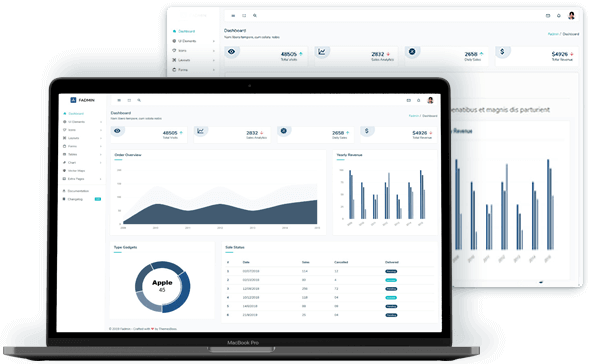Integrating software solutions into palliative care for pets represents a compassionate evolution in how caregivers approach the well-being of their animals. These tools facilitate the monitoring of crucial signs and behavioral shifts, allowing for timely interventions. For those new to the concept, understanding what is palliative care for pets is key to recognizing how these solutions support comfort and quality of life during a pet’s final stages. They also enhance communication between pet owners and veterinary professionals, fostering informed decisions. As the landscape of palliative care continues to evolve, understanding the full spectrum of benefits these technologies offer becomes essential for improving the quality of life for beloved companions.
Key Takeaways
- Software solutions enable effective tracking of pets’ physical and emotional well-being for timely care adjustments.
- They facilitate open communication between pet owners and veterinary professionals, enhancing care coordination.
- Data analytics support personalized care plans that adapt to the evolving needs of pets.
- Medication management apps help ensure consistent adherence to prescribed treatment schedules.
- Centralized information enhances the pet owner’s ability to make informed decisions regarding their pet’s comfort and quality of life.
Understanding Palliative Care for Pets: A Comprehensive Overview
Palliative care for pets is a compassionate approach designed to enhance the quality of life for animals facing serious, often terminal illnesses. This specialized care prioritizes comfort and dignity, recognizing the deep emotional bonds shared between pets and their owners. By focusing on pain relief, emotional support, and holistic well-being, palliative care allows pets to enjoy their remaining time with loved ones. It encompasses various strategies, including medication management, nutritional support, and environmental modifications, tailored to each pet’s unique needs. Pet owners are encouraged to engage in open conversations with veterinary professionals, ensuring a supportive network that fosters understanding and compassion. Ultimately, this approach affirms the value of every moment spent together, nurturing both pets and their families through a challenging journey.

The Role of Technology in Enhancing Palliative Care for Pets
As technology continues to advance, its integration into palliative care for pets is proving to be a transformative force. This innovative approach enhances the quality of life for beloved companions, allowing pet owners to provide the best possible care during difficult times.
Key roles of technology in this arena include:
- Telehealth Services: Facilitating remote consultations with veterinarians, ensuring timely support and guidance.
- Medication Management Apps: Helping owners track dosages and schedules, ensuring adherence to treatment plans.
- Comfort Monitoring Tools: Allowing caregivers to assess their pet’s comfort levels effectively.
Key Benefits of Software Solutions in Monitoring Pet Comfort
Monitoring pet comfort is paramount in ensuring a high quality of life during challenging times. Software solutions provide invaluable tools for pet owners and veterinarians alike, enabling thorough tracking of an animal’s physical and emotional well-being. These platforms can record essential signs, behavioral changes, and medication schedules, allowing for timely adjustments in care. Additionally, they facilitate communication between caregivers and veterinary professionals, fostering a collaborative approach to palliative care for pets. By centralizing information, software solutions empower pet owners to make informed decisions, ensuring their beloved companions receive the attention and comfort they deserve. This integration enhances the overall experience, creating a supportive environment that nurtures both pets and their families during difficult changes.
Case Studies: Successful Integration of Software in Palliative Care
The integration of software solutions in palliative care for pets has demonstrated transformative results, providing both emotional and practical support for families facing difficult decisions. Case studies have highlighted how technology can enhance the quality of life for pets and support their owners during challenging times.
Key successes include:
- Improved Communication: Software allows seamless communication between pet owners and veterinary teams, ensuring that concerns are addressed promptly.
- Personalized Care Plans: Tailored software can create customized care plans that adapt to the pet’s evolving needs.
- Data Tracking: Continuous monitoring of pet comfort levels provides insights that inform treatment choices and emotional support.
Through these examples, it is clear that integrating software solutions in palliative care for pets enriches the experience for both animals and their families, fostering a deeper sense of connection and understanding.
Future Trends in Palliative Care for Pets and Technology Integration
While advancements in technology continue to reshape various fields, the future of palliative care for pets promises a more compassionate and holistic approach through innovative software integration. Emerging trends indicate a shift towards personalized care plans, enabled by data analytics that tailor treatments to individual needs. Telemedicine platforms will facilitate closer communication between pet owners and veterinarians, fostering a supportive community around shared experiences. Additionally, wearable technology may monitor essential signs, ensuring timely interventions. As software solutions evolve, they will enhance the emotional well-being of pets and their families, creating a seamless blend of medical care and emotional support. Understanding what is palliative care for pets will become more accessible, promoting a sense of belonging among pet owners, steering them through these sensitive journeys.
Frequently Asked Questions
What Is Palliative Care for Pets Typically Used For?
Palliative care for pets is typically used to enhance comfort and quality of life for animals suffering from terminal illnesses or chronic conditions, focusing on pain management, emotional support, and ensuring a dignified end-of-life experience.
How Can Owners Assess Their Pet’s Quality of Life?
Owners can assess their pet’s quality of life through observation of behavior, appetite, mobility, and comfort levels. Regularly monitoring these aspects fosters a deeper connection and understanding, allowing for compassionate care during difficult times.
Are There Specific Software Solutions for Different Pet Species?
Various software solutions cater to different pet species, offering tailored features for monitoring health and providing care. By understanding specific needs, these tools enhance the overall well-being and support compassionate relationships between pets and their owners.
How Does Palliative Care Differ From Hospice Care for Pets?
Palliative care for pets focuses on comfort and quality of life during serious illness, while hospice care is a specific type of palliative care that provides support in end-of-life situations, emphasizing compassionate management and emotional support.
What Are Common Misconceptions About Palliative Care for Pets?
Common misconceptions about palliative care for pets include the belief that it equates to euthanasia or is solely for end-of-life situations. Many overlook its purpose in enhancing the quality of life through pain management and emotional support.
Conclusion
Incorporating software solutions into palliative care for pets represents a compassionate evolution in how we support our beloved companions during their final stages of life. By enhancing communication between caregivers and veterinary professionals, these tools empower pet owners to make informed decisions that prioritize their pets’ comfort and well-being. As technology continues to advance, the prospects for improving the quality of life for pets and their families in challenging times become increasingly promising and profound.
Also Read: How To Simplify Drug Testing With Cutting-Edge Software


